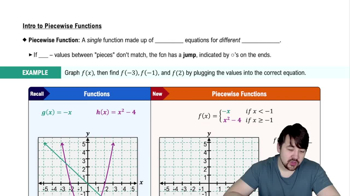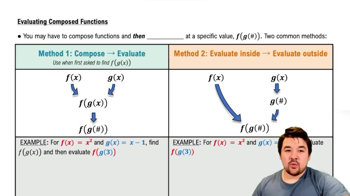Composition of Functions
Let f(x) = x − 3, g(x) = √x, h(x) = x³, and j(x) = 2x. Express each of the functions in Exercises 11 and 12 as a composition involving one or more of f, g, h, and j.
f. y = √(x³ − 3)
 Verified step by step guidance
Verified step by step guidance Verified video answer for a similar problem:
Verified video answer for a similar problem:



 5:56m
5:56mMaster Adding & Subtracting Functions with a bite sized video explanation from Patrick
Start learning